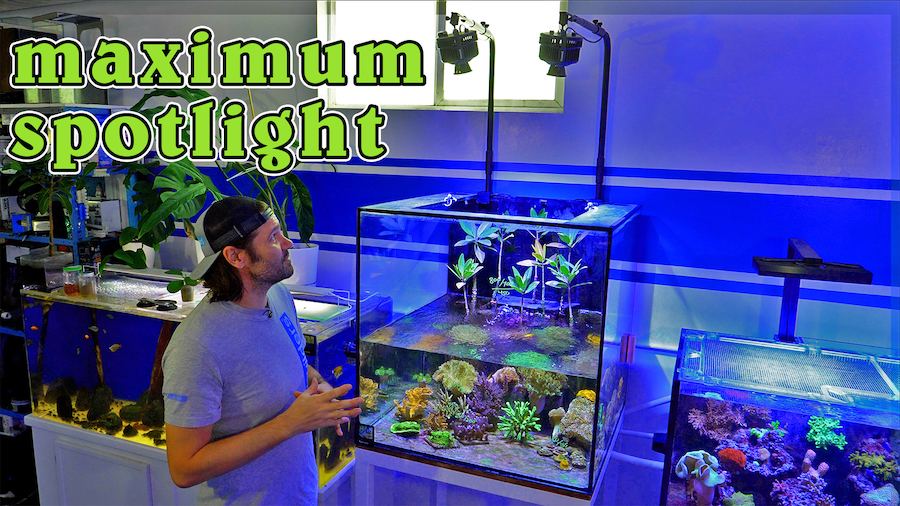There’s a lot of innovation happening in the reef aquarium lighting space with new fixtures announced with hybrid induction lamps, movable LED clusters, but the first one we’ve gotten our hands on is Kessil’s powerful A500X LED Spotlight. We’ve been using a pair of Kessil’s largest Dense Matrix Array over our saltwater vivarium which is split between a section of corals, and a section of emerged mangrove trees.
For the last six months we’ve been using Kessil’s most powerful spotlight over this 100 gallon, 30 inch cube with the 55 degree angle reflectors and they were mounted with a pair of goosenecks arms that just barely held the lights at a reasonable high above the tank. But for months now we’ve been interested in raising the lights even higher and trying out the 35 degree narrow angle reflector to more evenly illuminate the entire aquarium and reduce light spillage through the sides of the aquarium.
If this tank was filled with water and corals then the previous setup with the medium angle reflectors would have been ideal since the light spread would naturally be reflected from the glass which is in contact with water, bouncing around the tank and filling most of the display with lots of multi-angle light rays. However since we are trying to illuminate both the tree canopy out of water, and the corals on the bottom of the tank that are in water, having more directional lighting is a more efficient approach for this unconventional reef aquarium + mangrove tree display.
Before we switched the height and reflector setup of the Kessil A500X LEDs we decided to take plenty of PAR measurements inside and outside the tank, both emerged and submerged measurements of micromols. Interestingly the video of this changing lighting setup turned into a mini tutorial on the differences between a couple of Apogee’s most popular PAR meters since the MQ-500 is improved for taking measurements of LED lights, while the MQ-510 is optimized and more suitable for taking submerged measurements.
With the benefit of the previous PAR levels and some adjustments of the Kessil A500X height, angle and positioning we were able to mostly match the light intensity where we wanted, and to smooth out some of the lighting where it was previously concentrated or a little too bright. Raising the height of these 185 watt spotlights and pairing them with the narrowest reflector not only succeeded in giving us a more uniform light distribution, albeit more directional than before, but it also gives us room to allow the mangrove trees to grow out of the aquarium, hopefully developing into a lush canopy of mangrove leaves and branches in the future.



